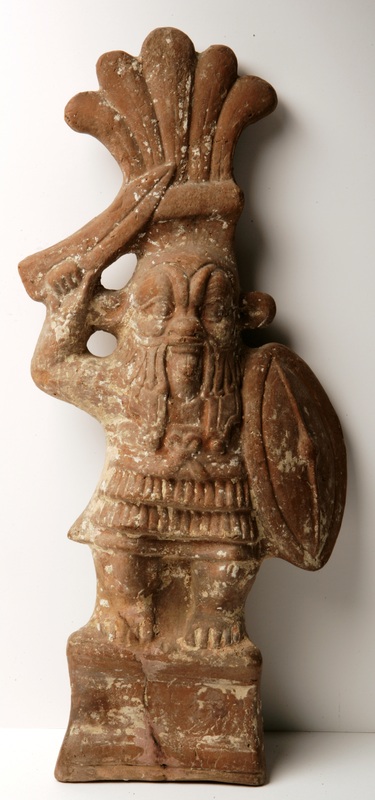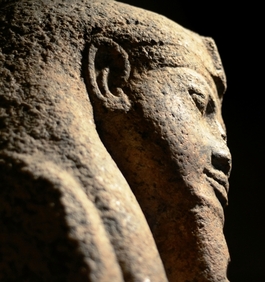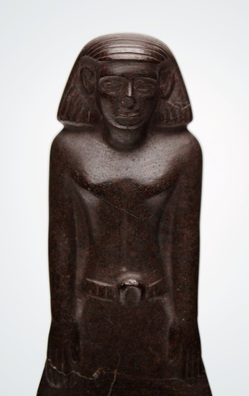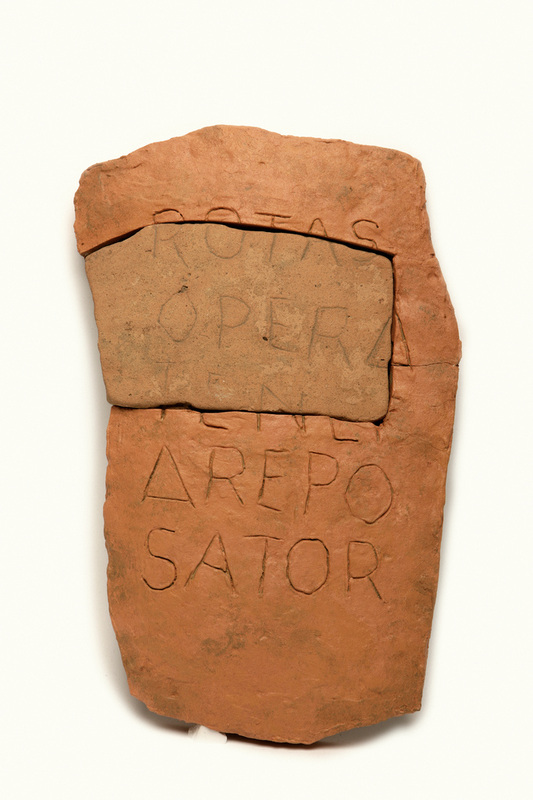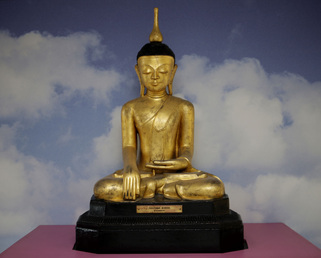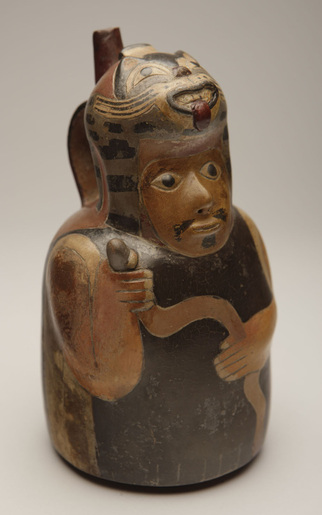Workshops at The Manchester Museum
As part of the conference, we collaborated with the University's Manchester Museum to provide delegates with the opportunity to participate in one of three expert-led workshops that look at artefacts from collections based in the Museum.
Each workshop allowed participants to approach different kinds of images in a different setting, whilst also serving to bridge some of the broader themes of the conference, including aesthetics, anthropology, art, and society. The workshops were tailored for theologians, but touched upon religious traditions beyond SST's primary focus on Christianity. A brief overview of each workshop is provided below.
Each workshop allowed participants to approach different kinds of images in a different setting, whilst also serving to bridge some of the broader themes of the conference, including aesthetics, anthropology, art, and society. The workshops were tailored for theologians, but touched upon religious traditions beyond SST's primary focus on Christianity. A brief overview of each workshop is provided below.
Session 1, 'Egyptology' (with Dr. Campbell Price)
Friday 9th January, 15:15-16:45
The Manchester Museum holds around 18,000 objects from ancient Egypt and Sudan, one of the most important collections in the UK. Objects illustrate the Egyptian desire to render divine beings as anthropomorphic animals, changes in traditional Pharaonic iconography of deities in the Roman Period, images as active substitutes of the deceased, deliberately damaged images that affect the survival of the deceased in the afterlife, and modern receptions of the Egyptian image.
Campbell Price is Curator of Egypt and Sudan at Manchester Museum. He received his BA, MA and PhD in Egyptology from the University of Liverpool, where he is an Honorary Research Fellow. His research interests include the forms and functions of ancient Egyptian sculpture, and their modern reception.
Read more about Egyptology at the Manchester Museum via the dedicated blog.
Friday 9th January, 15:15-16:45
The Manchester Museum holds around 18,000 objects from ancient Egypt and Sudan, one of the most important collections in the UK. Objects illustrate the Egyptian desire to render divine beings as anthropomorphic animals, changes in traditional Pharaonic iconography of deities in the Roman Period, images as active substitutes of the deceased, deliberately damaged images that affect the survival of the deceased in the afterlife, and modern receptions of the Egyptian image.
Campbell Price is Curator of Egypt and Sudan at Manchester Museum. He received his BA, MA and PhD in Egyptology from the University of Liverpool, where he is an Honorary Research Fellow. His research interests include the forms and functions of ancient Egyptian sculpture, and their modern reception.
Read more about Egyptology at the Manchester Museum via the dedicated blog.
Above are some images from the Egyptology collection, illustrating (clockwise, from left) the god Bes, in Roman military attire; a monumental granite head of god-king Ramesses II; and the statue of a chap called Neb-iw, who achieved world-wide fame as the “spinning statue” of Manchester Museum.
Session 2, 'Archaeology' (with Dr. Bryan Sitch)
Saturday 10th January, 11:30-13:00
There are about 50,000 items in Manchester Museum’s archaeology collection which comprises material from British and European prehistory, Roman Britain, the Middle Ages and more recent periods, Greek and Roman antiquities from the Mediterranean, and objects from the near East, and Africa. Amongst the numerous civilisations and cultures that are represented amongst material collected across such a wide geographical area and time span a number of objects are particularly relevant to the topic of Images, Idols and Icons. A slab from the Assyrian palace at Nineveh in northern Iraq and dating from the reign of Ashurnasirpal II (883-859 BC) shows a cuneiform inscription and a winged deity holding a pomegranate. The famous Manchester wordsquare is a palindrome which, when the letters are rearranged, spells PATERNOSTER twice leaving the letters A and O. If of Christian significance this is the earliest evidence of the religion in northern Roman Britain. The chief rival contender for lead religion of the Roman Empire is represented by two carved pieces of stone from a temple dedicated to the eastern god Mithras found at Hulme in 1821. Inscriptions on Roman altars and bronze figurines attest to the deities of the traditional Roman pantheon.
Bryan Sitch is Deputy Head of Collections and Curator of Archaeology at Manchester Museum and has worked in museums for over 25 years. In Manchester he has been lead curator on a number of permanent and temporary exhibitions including Lindow Man A Bog Body Mystery (April 2008-2009), which won a Design Week Award and a British Archaeology Award 2010 for innovation in the presentation of human remains. He was responsible for the Discovering Archaeology gallery in the Ancient Worlds displays (opened October 2012). The varied content of these displays includes material that is of direct relevance to Idols, Images and Icons such as the Manchester wordsquare and the Hulme Mithraic temple carvings. More recently he worked with the University’s Archaeology Department on Fragmentary Ancestors: Figurines and Archaeology from Koma Land, Ghana which showed for the first time in the UK an important group of terracotta votive figurines from Ghana in West Africa. More recently he project managed the Parklife: Pleasure, Play and Politics in Whitworth Park exhibition. He is currently working on another exciting temporary exhibition about Easter Island called Making Monuments on Rapa Nui, which opens in April 2015.
You can read about all these projects and more on the Museum’s Ancient Worlds Blog.
The image above shows the Manchester wordsquare (from a context dating to the 180s AD).
Session 3, 'Living Cultures' (with Dr. Stephen Welsh)
Saturday 10th January, 13:45-15:15
Manchester Museum has around 18,000 ethnographic objects, a considerable percentage of which are directly or indirectly related to religious and ritual practice. They include a Burmese Buddha statue, a Nazca shamanic vessel, and a Kwakwaka'wakw carving of the crucifixion. These objects illustrate the fascination by 19th and early 20th century ethnographic collectors and museums in extra-European religion but also the proselytising zeal of Christian missionary activity. Once exhibited for their aesthetic merit museums increasingly recognise that they are active and animate to the originating religion and culture. The incorporation of multiple theologies and cosmologies to inform the display, storage and conservation of such objects presents a major ethical challenge for 21st century museums.
Read more about Living Cultures at the Manchester Museum via the Mancultural blog.
Above are images of (clockwise, from top-left) a Burmese Buddha statue, a Kwakwaka'wakw carving of the crucifixion, and a Nazca shamanic vessel.
The image (top) is Nkisi Mangaaka, a nailed anthropomorphic 'power figure' associated with the culture of Kongo. The sculpture is held at the Manchester Museum, and the composite image is reproduced by courtesy of the University Librarian and Director, The John Rylands Library, University of Manchester.
